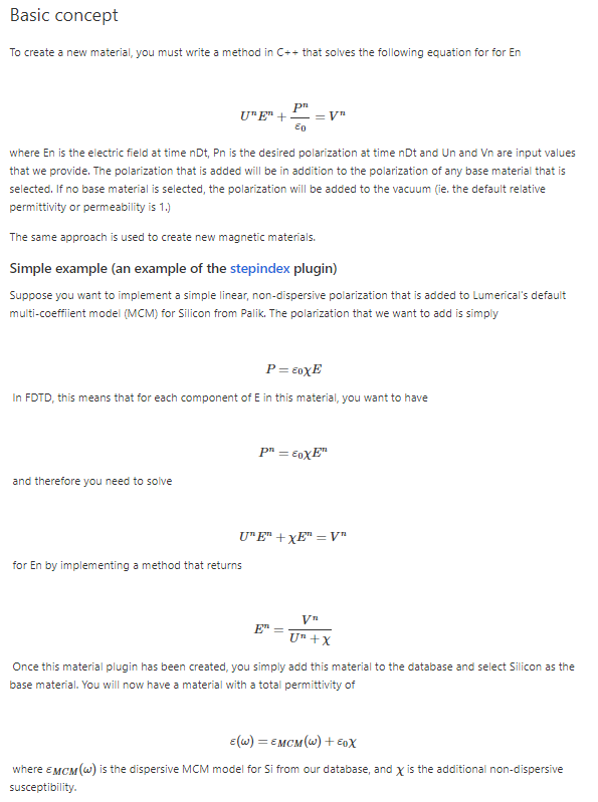TAGGED: advanced-features
-
-
June 28, 2022 at 4:47 pm
jxx89
SubscriberHi,
I was wondering if it is possbile to model the RLC elements to be time-varying. Previously I have tried to model time-varying permittivity using the material plug-in (), and have fully understood how to update the equation for En. So can we do similiar things for RLC element? .
I read the article about it (https://optics.ansys.com/hc/en-us/articles/360034915113-Standard-optical-conductivity-material-models-in-FDTD-and-MODE), and found that RLC element is implemented as a distributed surface conductivity.
So I guess if we have a simliar equation that can update surface conductivity in time, then it would be feasible?
-
June 28, 2022 at 8:17 pm
Guilin Sun
Ansys EmployeeYou may try but no guarantee. This topic is not only out of thie forum scope, but also a very advanced feature. The forum is mainly for learning to use software; and the advanced feature has very limited support.
Sorry about that.
-
June 29, 2022 at 4:17 pm
jxx89
SubscriberHi Dr Sun:
Thank you very much for your quick response. I know it is a very advanced topic and you also may not have an idea, but I am just curious if I can get help from other channels (for e.g, not in this forum)? Because this would be really important in my research?.Since Lumerical gives users this flexibility to modify the update equations, there maybe some of your technical people have an answer about it? Modifying the equation for surface conductivity should be very simple if this functionality is enabled (like electric fields). I simply wish to know if it is feasible before I started trying on my own. I read all the related articles regarding materal plug-in by Lumerical, but cannot find the solution by myself?.
Hope to have your reply!
Thanks
Jingwei
-
-
June 28, 2022 at 9:29 pm
jxx89
SubscriberDoes anyone else know the answer?
-
July 21, 2023 at 5:02 pm
hz1
SubscriberI belive the Plugin Framework does not support 2D materials. The best thing one can do is probably convert the 2D sheet properties to 3D volumetric properties and modify these parameters in time. Please correct me if I am wrong.
-
July 21, 2023 at 6:18 pm
Guilin Sun
Ansys EmployeeYou are right since the update questions are not the same.
-
July 22, 2023 at 5:10 pm
hz1
SubscriberIs there a plan to have the plugin framework extended to 2D materials by any chance?
-
July 24, 2023 at 3:59 pm
Guilin Sun
Ansys EmployeeAt this moment, unfortunately, I have not heard of any such plans. Please file a feature request.
New Feature vote: Vote new features, and file your feature request
-
July 24, 2023 at 4:44 pm
hz1
SubscriberThanks, I will file a feature request. However, in my experience, none of the feature requests I have submitted in the past was even opened for voting, let alone implemented.
-
July 24, 2023 at 6:23 pm
Guilin Sun
Ansys EmployeeUnderstand. Each year we receive hundreds of feature requests, and the improvements for the products are driven by broad customer needs. Due to limited resources only a small portion, most desired is implemented. We have mechanism to evalute each request and have tiers for them. We strongly suggest customers to develop their own models. Some of the features are initially implemented by customers first.
-
July 24, 2023 at 6:28 pm
hz1
SubscriberYes, but in this case (developing custom 2D material plugins), I don't think there is a way for the "customer to develop their own model", since this would require access to the 2D material source code/update equations through the Material Plugin Framework, right?
-
- The topic ‘time-varying RLC properties’ is closed to new replies.



-
4678
-
1565
-
1386
-
1241
-
1021

© 2025 Copyright ANSYS, Inc. All rights reserved.








